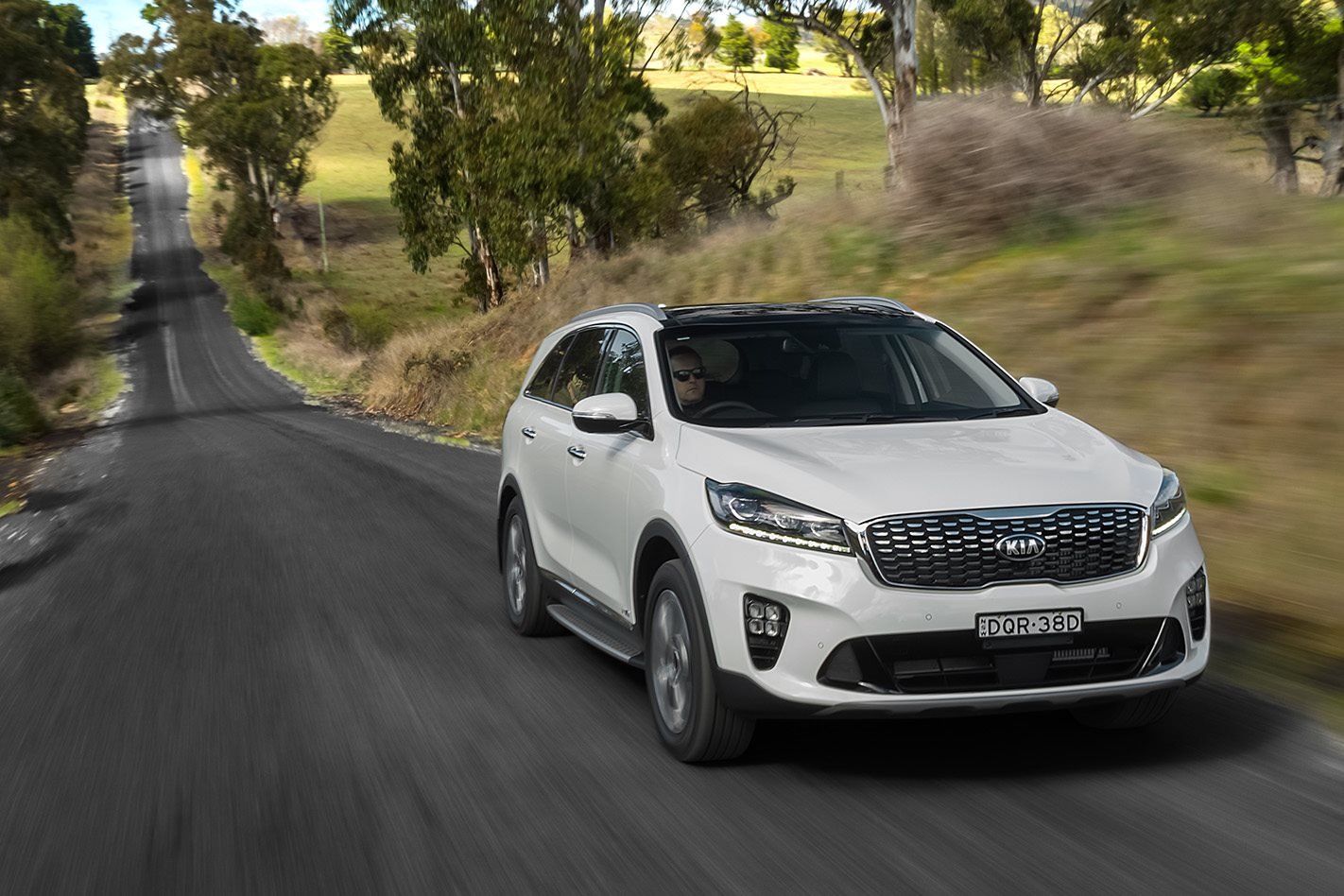
Score breakdown
Things we like
- Features
- Smooth and potent diesel
- Warranty
- Auto braking
Not so much
- Thirst of petrol V6
What stands out?
The third-generation Kia Sorento is a comfortable seven-seat SUV that’s beautifully finished inside, well equipped, and enjoyable to drive, with excellent smartphone integration. The optional diesel engine is refined and powerful, and the Sorento is covered by Kia’s seven-year warranty. Auto braking is standard.
This model Sorento should prove good value on the used especially if it’s still covered by its seven-year warranty.
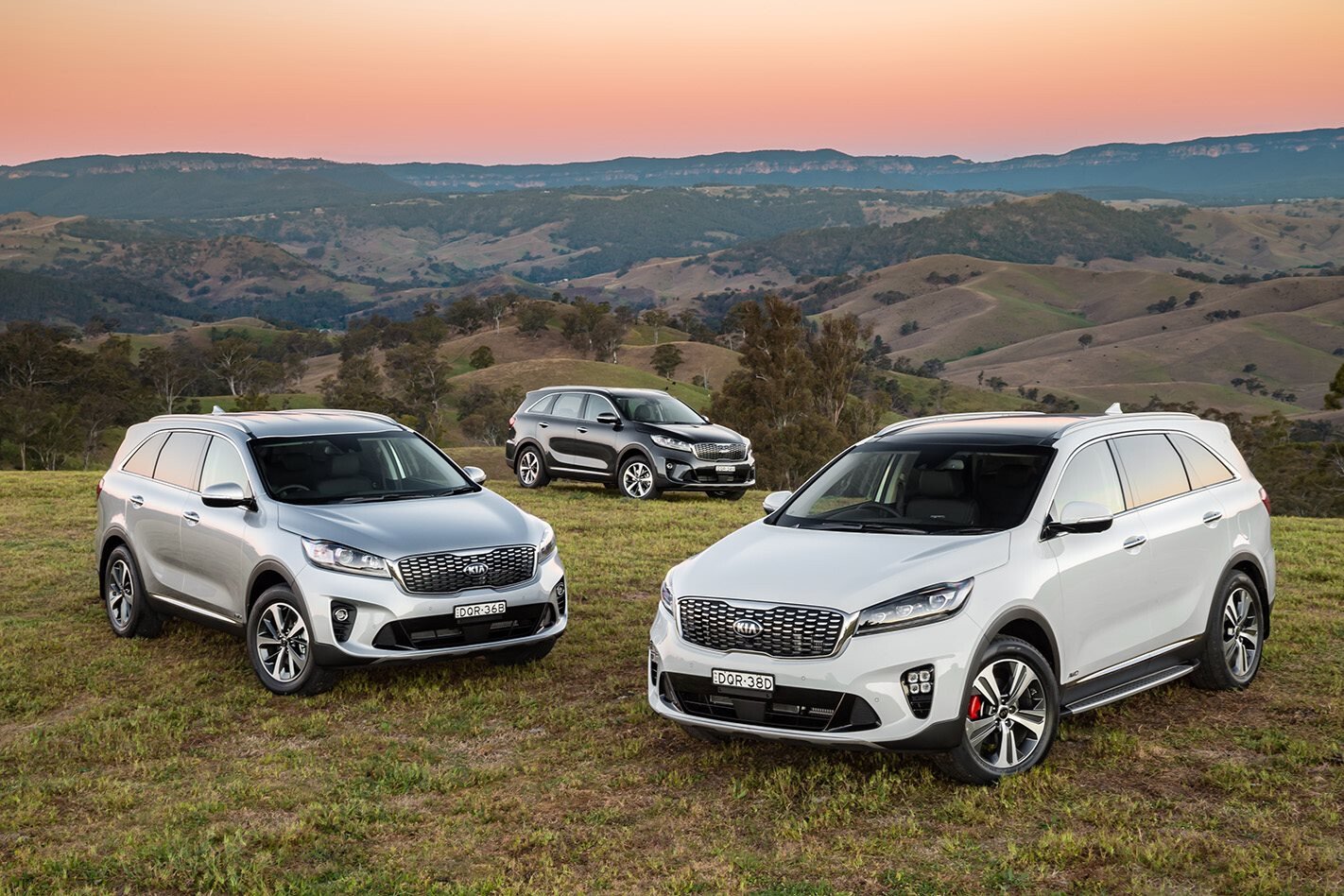
You can also read our review of the Sorento that this facelifted car replaced in October 2017.
What might bug me?
Not much, perhaps not having an all-wheel-drive option if you want a petrol Sorento.What you see is pretty much what you get with the Sorento – it’s not likely you’ll be ambushed by annoying surprises. It even has a full-sized spare wheel and tyre, and the wheel is aluminium alloy like the others on the car.
What body styles were there?
Five-door SUV-style wagon only.The Kia Sorento drives either its front wheels or all four wheels. It is classed as a large SUV, lower priced.
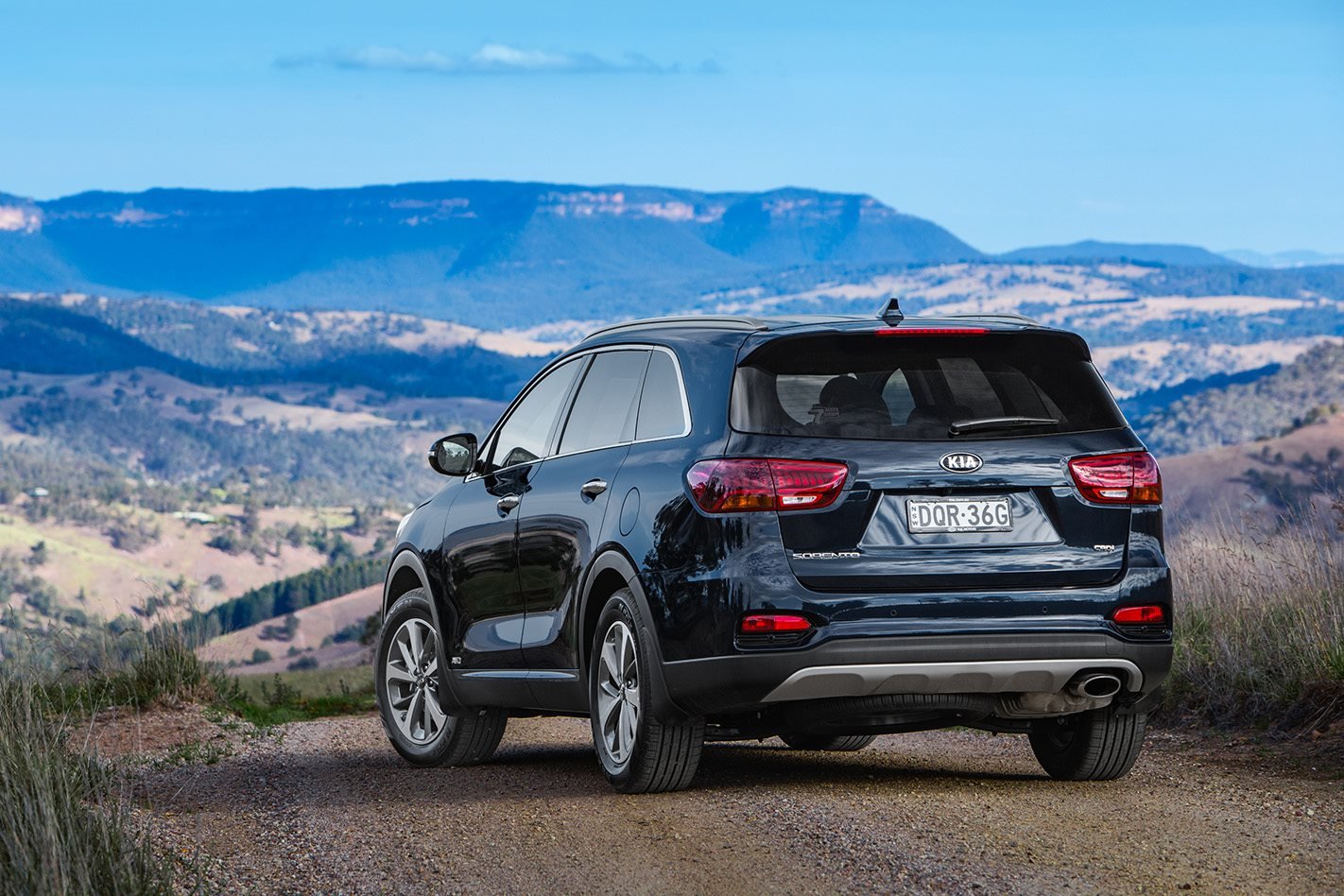
What features do all 2018-2020 Sorentos have?
An 8.0-inch colour touchscreen, for controlling infotainment and other cabin functions. Support for Apple CarPlay and Android Auto, which lets you display apps from compatible smartphones on the central screen and control them from there.An MP3-compatible, sound system with AM/FM and digital radio, Aux and USB inputs, Bluetooth connectivity for phone calls and audio streaming, and audio controls on the steering wheel.
Satellite navigation that does not depend on your phone.Four USB ports for charging mobile devices: two for front passengers and another two for those in the rear.Headlights that turn on automatically when it’s getting dark. Cornering lights, which shine into bends when you turn the wheel. Daytime running lights, illuminated by long-lasting LEDs.A reversing camera, and parking sensors front and rear (these help you judge how far the bumpers are from obstacles).Dual-zone climate control, which lets the driver and front passenger choose different ventilation temperatures.Hill-launch assist, which operates the brakes automatically to make take-offs on steep hills easier.Wheels made from aluminium alloy, which are usually lighter and better looking than steel wheels with plastic covers. A full-size spare tyre, on an alloy wheel.Tyre pressure monitors, which warn you if a tyre has lost air (this can give you extra time to get a slow puncture seen to).Adaptive cruise control, which can hold you automatically at a safe distance from a car in front that is travelling slower than your set speed, until the way is clear. It can also hold your place in heavy traffic, stopping and starting the Sorento for you.An advanced driver assistance package that includes autonomous emergency braking for city and highway speeds, lane keeping assist, adaptive cruise control, and a driver attention warning.Six airbags. Electronic stability control, which can help you control a skidding car. (For the placement of airbags, and more on Kia Sorento safety features, please open the Safety section below.)Every Kia Sorento carries a seven-year, unlimited kilometre warranty, which is transferable to subsequent owners.
Which engine uses least fuel, and why wouldn’t I choose it?
All front-drive Sorentos use a petrol engine, and every all-wheel drive Sorento is powered by a diesel.Even with AWD, it is the 2.2-litre four-cylinder turbo-diesel that uses least fuel, consuming 7.2L/100km on the official test (city and country combined).
In many respects, an AWD diesel Sorento is preferable to its front-wheel drive petrol alternative. The diesel accelerates the car with powerful ease from low speeds, offering about 40 per cent more urge than the petrol engine in most driving conditions. And AWD is nice to have for its extra traction on slippery surfaces.The main reason you might not choose a diesel is that you want to pay less for a Sorento.The petrol engine, a 3.5-litre V6, drinks substantially more fuel than the diesel, at 10 litres/100km on the same official test. However it does produce more power if you work it really hard.You can have either engine in a Sorento Si, Sport or SLi. The GT-Line is diesel only.Every Sorento has an eight-speed conventional automatic gearbox.Power outputs and all other Kia Sorento specifications are available from the Cars Covered menu, under the main image on this page.
What key features do I get if I spend more?
The least costly Sorento is the Sorento S, which has cloth upholstery, 17-inch wheels, and the features common to all Sorentos.Spend more and you can have a Sorento Sport, which has seats trimmed in a mix of real and fake leather. Wheels are an inch bigger, at 18 inches, and mount lower profile tyres, which slightly sharpen the steering and look sportier.

Paying more again for a Sorento Sport+ gets you a smart key (which lets you unlock and start the car with your key kept safely in a pocket or bag). A powered tailgate will open for you if you are carrying that key. The driver’s seat power-adjusts, the sound system is better and has more speakers, and taillights use very long-lived LEDs.The Sport+ is the only Sorento model to offer a choice of interior trim colours beyond the standard black, with two-tone black and stone available at no extra cost.
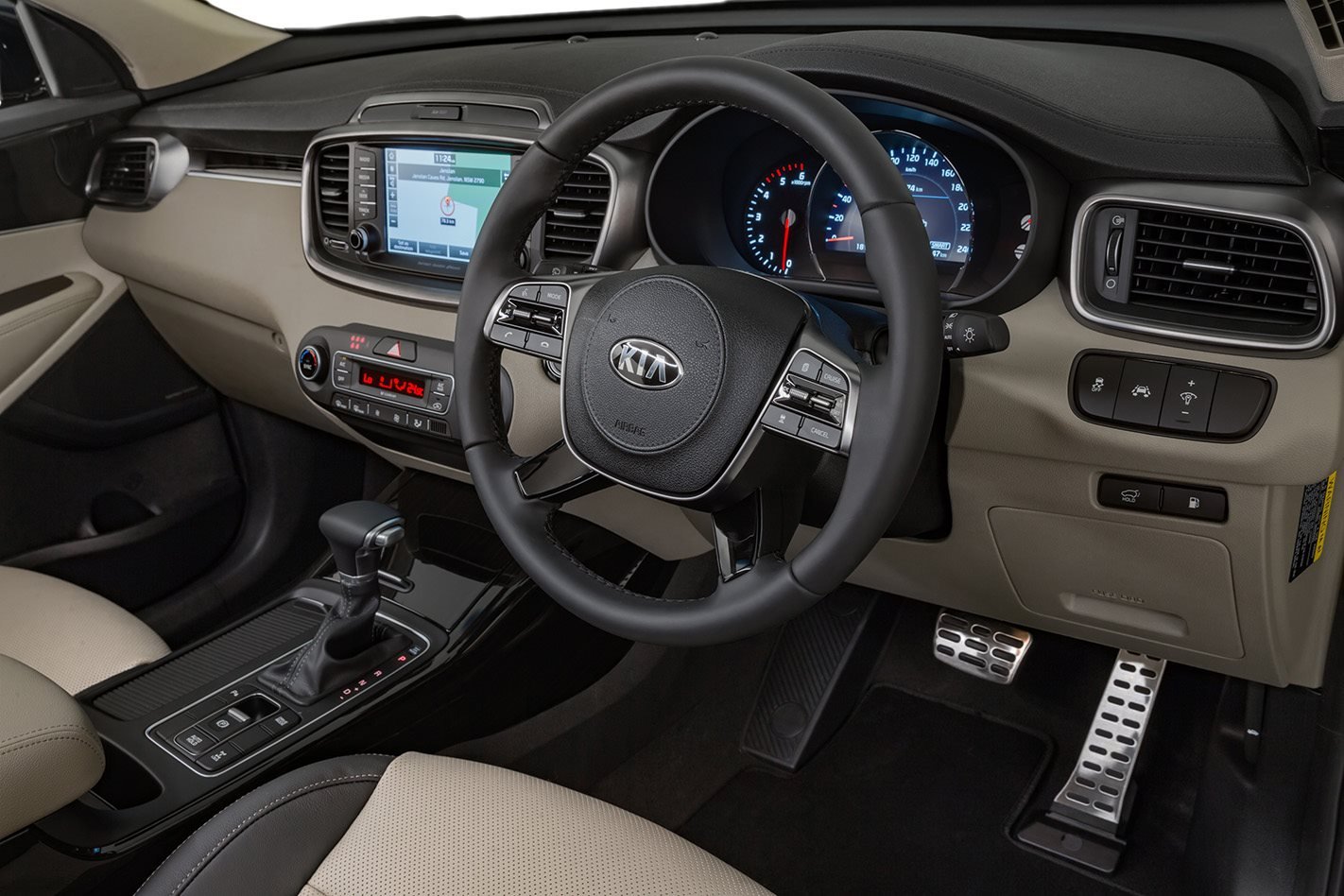
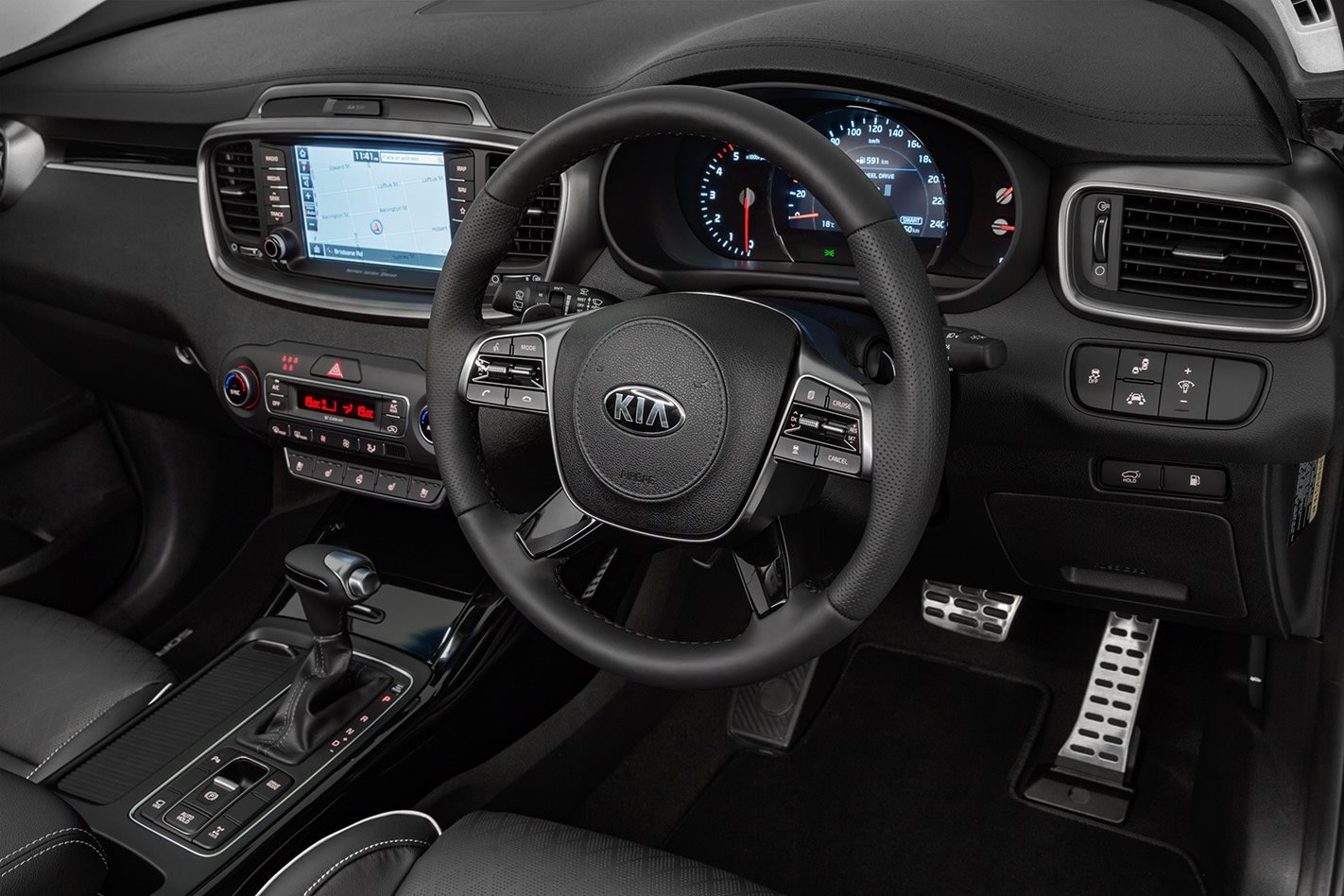
The front and second-row seats are heated, as is the steering wheel, and the front seats are ventilated. There is a big, power operated sunroof that opens above the first two seat-rows. Very bright LED headlights abet the cornering lights by shining into turns as you enter them. Wheel size increases a further inch, to 19 inches, and other aesthetic changes include red brake calipers.
The GT-Line also brings a blind-spot monitor and rear cross-traffic alert. And parking is made easier with a 360-degree camera view, which provides a simulated top-down view of the car and surrounding obstacles.
Did any upgrade have a down side?
The Sorento S, on its 17-inch wheels, rides more comfortably than the Sport, Sport+and GT-Line, on their 18s and 19s. The lower profile tyres on the bigger wheels have less rubber and air cushioning the wheels from the road. The difference is most pronounced at city speeds.The GT-Line’s bigger wheels and panoramic sunroof can lead to more road and wind noise, too.
The powered and heated front seats in the GT-Line feel firmer and a little less comfortable than the seats in the Sport and Sport+.Of seven colours available, only one, Clear White, comes without extra cost. Other colours cost about $600.
How comfortable is the Sorento?
As soon as you ease into the driver’s seat, shut the door with a substantial thud and grip the sculpted steering wheel, you get a feeling that the Sorento will be very nice to drive and ride in.
This sense continues with the lovely design of the dashboard. Cabin presentation is clean, simple and smart, with plenty of soft-touch plastics. The general look and feel is evocative of a more costly European car.
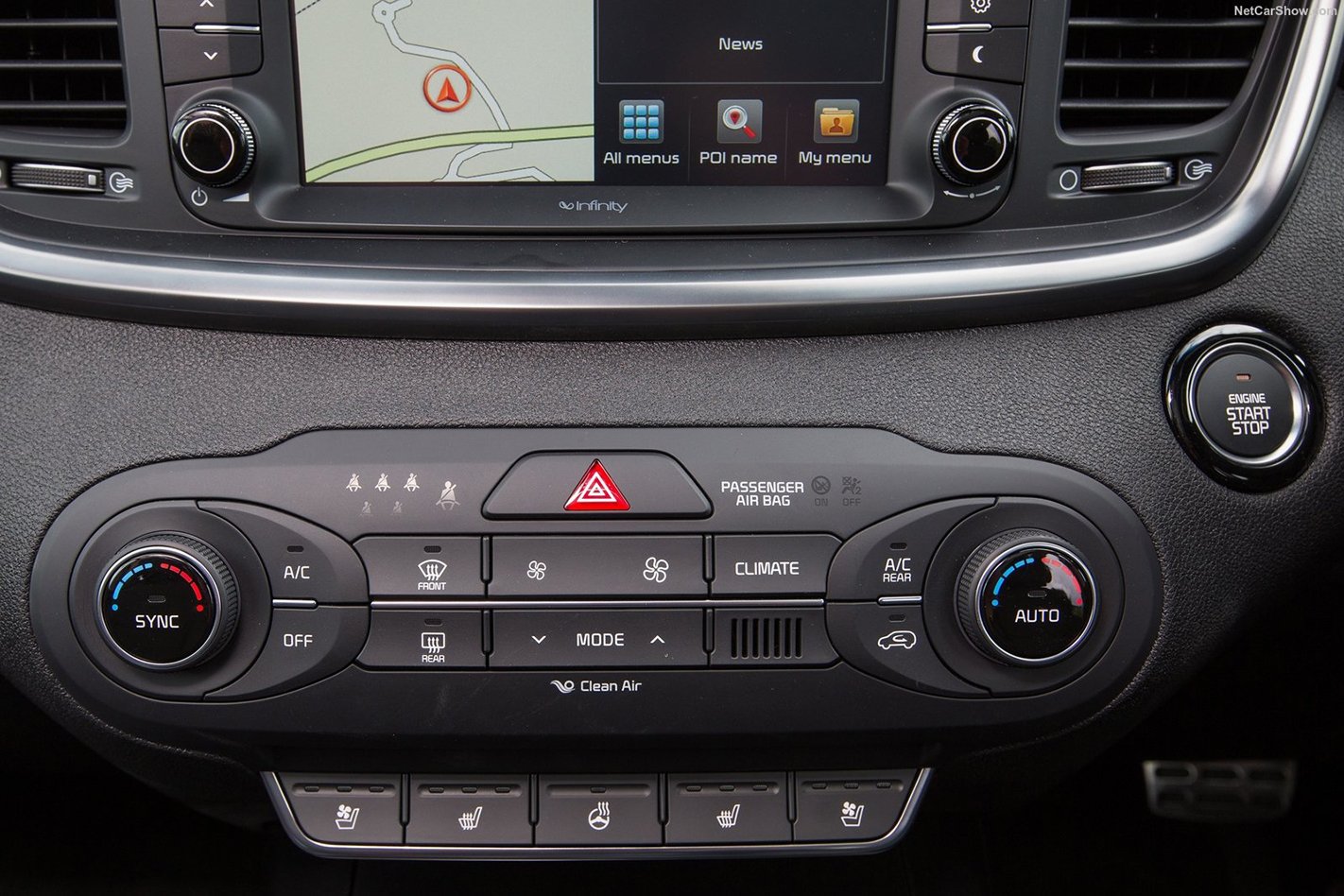
What about safety in a Kia Sorento?
Anti-lock brakes, stability control, a strong body structure, six airbags, LED running lights, a reversing camera, and seatbelt warnings for all positions, are fine safety fundamentals in all Sorentos.
There are two airbags directly in front of the driver and front passenger; one alongside each front occupant to protect the upper body; and a curtain airbag down each side protecting the heads of those riding in all three rows.A mid-life facelift that arrived in October 2017, for the 2018 model year, brought autonomous emergency braking and other active safety aids to every Sorento. Auto braking can brake the car automatically to prevent or mitigate an impact with an obstacle in front (typically another car that has slowed suddenly). The Sorento’s system works at highway speeds, and at slower city speeds where it can also detect and brake for pedestrians.All Sorentos are equipped with lane keeping assist, which helps keep the vehicle between the white lines should you become distracted, and a driver attention alert, which produces a visual and audible alarm if it senses wayward driving that could be caused by fatigue.The Sorento GT-Line (only) also has a Blind spot monitor, which warns you when a vehicle is alongside out of view. A related Lane-change assist alerts you if you are about to change lanes into the path of a vehicle approaching quickly from behind. And a Rear cross-traffic alert warns you, when reversing, if something is crossing your path.The Australasian New Car Assessment Program (ANCAP) has rated the Sorento at five stars for safety, its maximum, most recently in October 2017. The Sorento gained perfect scores in the pole and side-impact parts of the crash safety test, on the way to an excellent total score of 36.62 out of 37.
I like driving – will I enjoy this car?
For a long time large SUVs – and Kias – were not much chop to drive. The third-generation Sorento proved good enough to emerge the surprise winner from a Wheels magazine comparison in September 2015, against four prime seven-seat alternatives. The Wheels win was a first for the model, and for the Kia brand.The current model, which arrived in October 2017, is a facelifted version of that 2015 car. The upgrade brought improvements to ride and handling, with a revised suspension that was recalibrated in Australia to suit rougher local roads. The result is a better ride, and less body roll in corners.

The electric power steering was always excellent in the Sorento, but that was also improved for a more direct response.On the GT-Line, 19-inch wheels with lower profile tyres give more immediately responsive handling than you experience in the less costly versions, though you do feel bumps a little more.
Turbo-diesel Sorentos surge forward when you press the accelerator. You will love the effortless oomph the engine provides – it’s a big part of what makes the Sorento satisfying.The petrol car isn’t quite so potent at low engine speeds but offers similar shove at medium engine speeds. And on a matching tyre package it’s a bit sharper to steer: the petrol engine is lighter than the diesel, which means there is less weight over the front wheels and less weight overall.
How is life in the rear seats?
Second row passengers have it good in the Sorento. The seat is supportive, and the rear compartment is roomy. And they get a centre armrest (with twin cupholders), a 12-volt socket, and two USB sockets for charging electronic devices. In Sport+ and GT-Line versions, the outer seats are heated.Importantly for long trips, rear passengers also get dedicated second-row air-conditioning vents, and handy roll-up sunshade blinds.
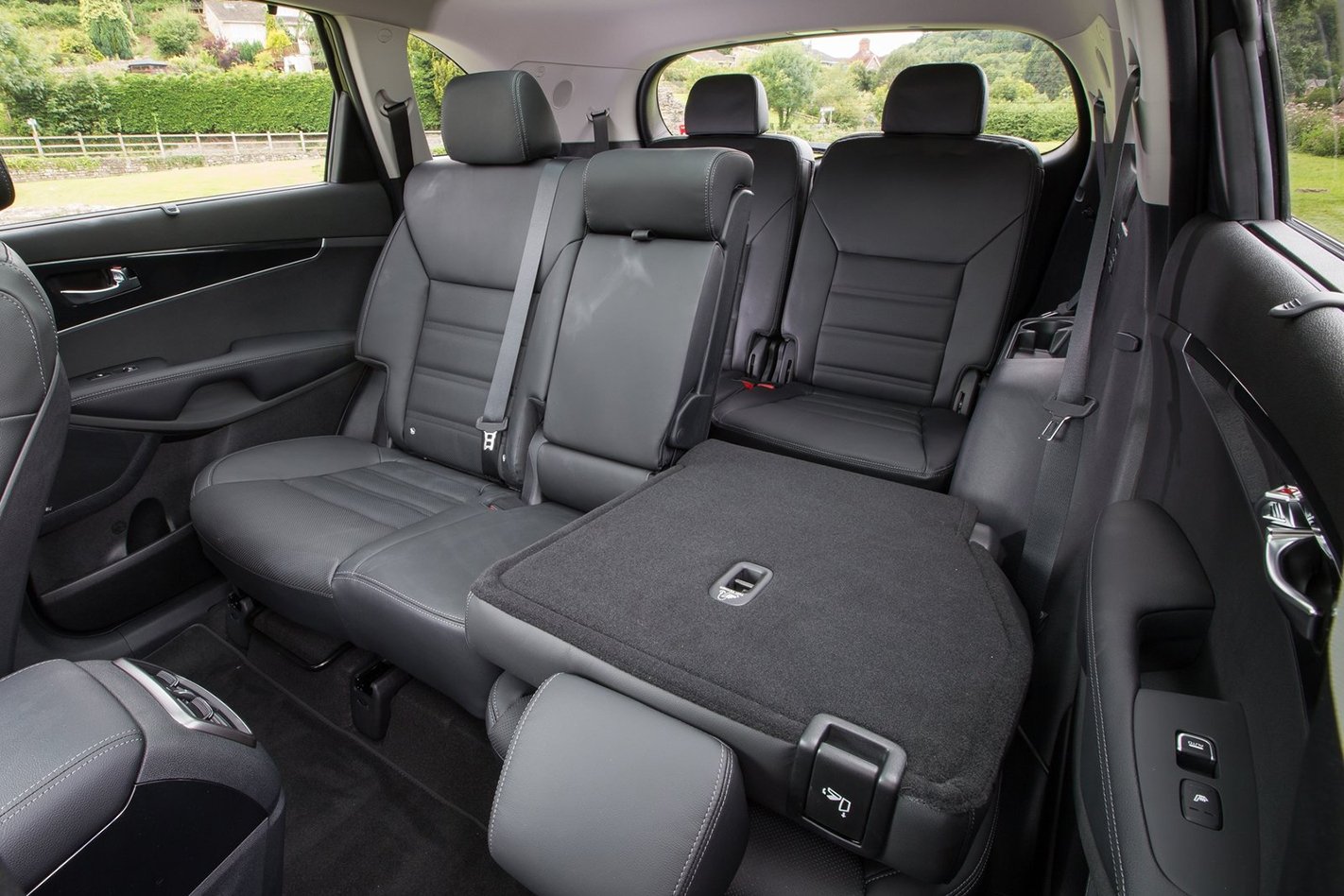
The third row is too cramped to be comfortable for adults on long trips, but it’s roomy enough for children aged in the single digits. They get a pair of cup holders, their own air-conditioning vents and fan controls, and a good view forward and out of the side windows.
How is it for carrying stuff?
With the third row seats folded flat (50/50), the cargo bay swallows a substantial 605 litres of stuff.Fold the second row (60/40) as well, and cargo capacity opens out to a van-like 1662 litres.

The hands-free powered tailgate in SLi and GT-Line versions opens when you walk up to it with the car’s key in your pocket. That eases loading when you have your hands full.
Where did Kia make this model Sorento?
The third-generation Kia Sorento was produced in South Korea.
What might I miss that similar large SUVs have?
Not much. The third-generation Sorento was very well equipped.Perhaps a hybrid version as available with the Nissan Pathfinder.
Comparable seven-seat SUVs you might consider include the Mazda CX-9 or CX-8 if you prefer diesel, Toyota Kluger, Holden Acadia, Skoda Karoq and Hyundai Santa Fe.If comfortable travel for seven is more important than getting off the beaten track, perhaps consider the Kia Carnival, which has more room in the third row and easier access to it.
When did Kia replace this model Sorento?
This third-generation Kia Sorento arrived in 2015, in Si, SLi, and Platinum trim. About December 2016 the Sorento GT-Line, a cosmetically enhanced Platinum, was added, and both it and the Platinum gained autonomous emergency braking.
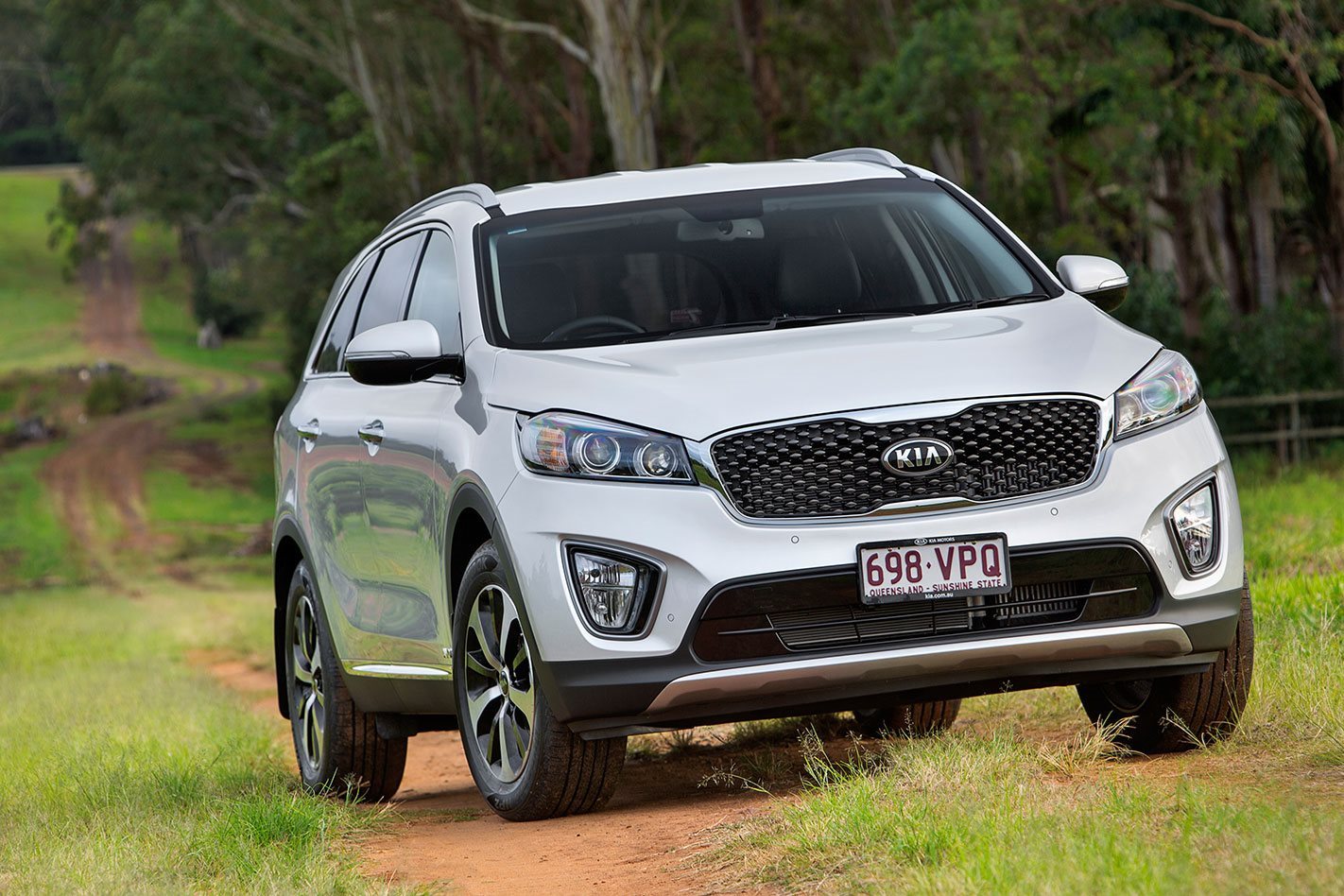
In May 2017 Kia extended the range further, adding the Si Limited – a leather-trimmed version of the least costly Sorento.
In October 2017, the Sorento received a mid-life facelift for the 2018 model year. The upgrade extended auto braking and other active safety features to all Sorentos, along with support for smartphone mirroring, and it lifted cabin quality.
The original car’s six-speed auto gearbox was replaced with an eight-speeder, and the optional V6 petrol engine received a slight power increase. Suspension and steering were also revised. The Sorento Sport replaced the Si Limited, and the Platinum was withdrawn – leaving the GT-Line as the premier trim level.
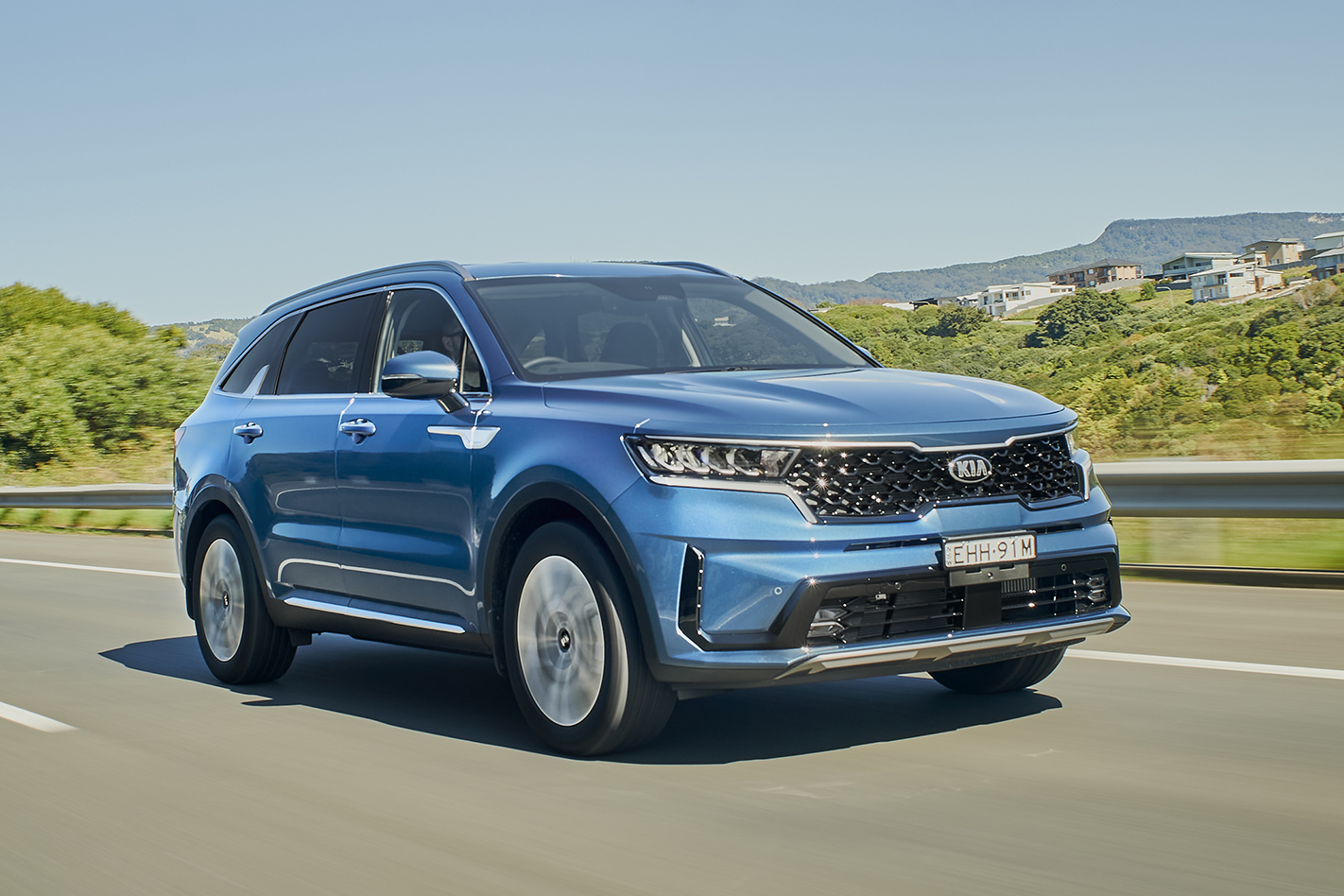
The new fourth-generation Sorento arrived on September 2020 for the 2021 model year, with a more striking design and a host of technological advancements including new driver assistance systems. A hybrid version is expected in early 2021.
I like this car, but I can’t choose which version. Can you help?
We liked the Sorento Sport+, because it strikes a pleasing balance of price and equipment. Ultimately, the diesel is a better bet than the petrol, because it has more grunt and uses less fuel. But the petrol is less costly and steers a bit more satisfyingly. If the extra fuel use and absence of AWD are not drawbacks for you, it’s worth a look, too.
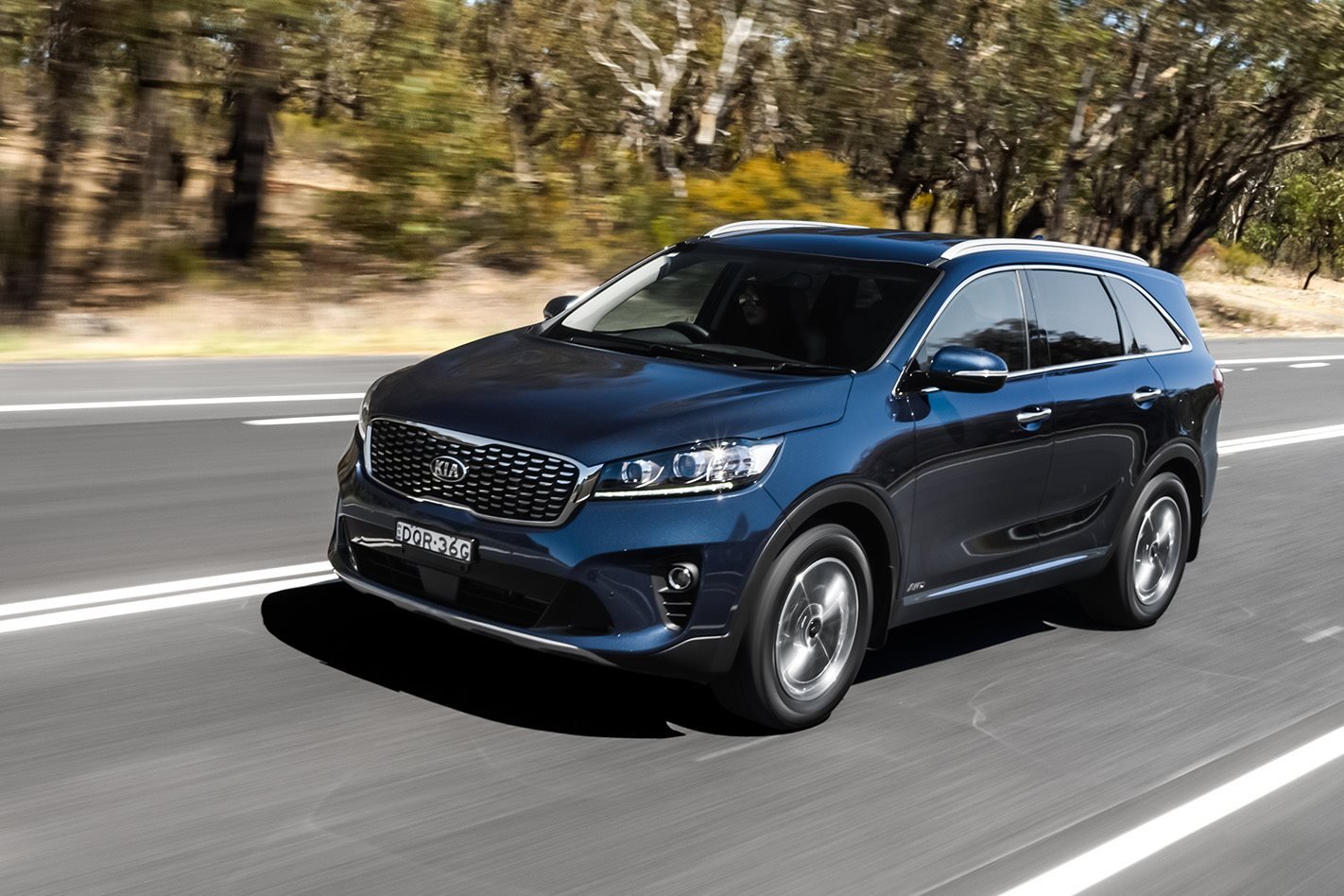
If you don’t need all the SLi features, you could have some leather on the seats for less money with a Sorento Sport.
Score breakdown
Things we like
- Features
- Smooth and potent diesel
- Warranty
- Auto braking
Not so much
- Thirst of petrol V6



